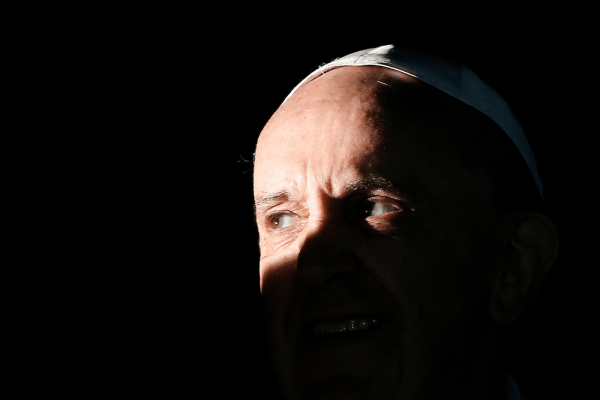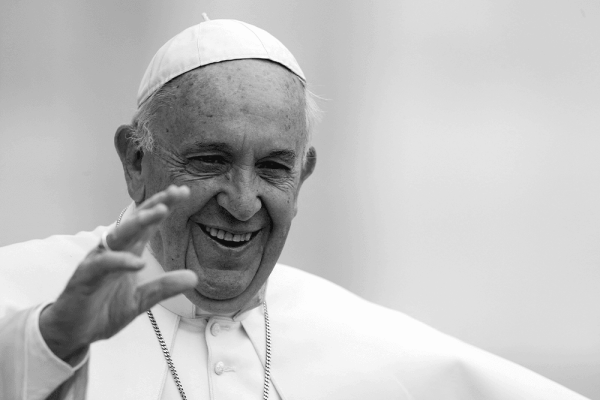Call it an American melting pot – or posole, a traditional Mexican soup, or cioppino, an Italian fisherman’s stew – Our Lady of Mount Carmel Church in the Belmont neighborhood of the Bronx welcomes worshippers from more than a dozen nations.
“You have people from almost every country living here: from Albania, Nigeria, Latin America,” said Rev. Fr. Israel Boadi, 44, the Ghanaian priest of Mount Carmel, an Italian national parish established for Italian immigrants in 1906. Boadi stands out in the congregation in his bright green vestments.
Once known as the Italian Roman Catholic Church in the heart of Arthur Avenue – the historic Little Italy of the Bronx – Mount Carmel now offers Mass in Spanish and Albanian in addition to the services in English and Italian it has traditionally held. Staff and worshippers say the church has opened its doors to today’s immigrants just as it did for Italians a century ago.
A national parish is a type of Catholic church distinguished by liturgical traditions or nationality of the congregation. Ethnic parishes were developed in the U.S. for European immigrants in the 19th and early 20th centuries. But as national sentiments shifted to an anti-immigrant tone in the 1920s, Italian, German, and Polish national parishes started to close. The 1924 Immigration Act restricted immigration from Italy and Eastern Europe, prohibiting mass immigration from Catholic countries, according to National Catholic Reporter. Ethnic parishes were soon phased out for territorial parishes.
But over 100 years later, Mount Carmel is still open, and the Italian national parish has adapted to the changing demographics of the neighborhood.
Today, most parishioners are Mexican or Mexican American.
“You know, coming from an immigrant family, I empathize with them. I get where they’re coming from because I had the same experience,” Elizabeth Mannini, 53, said.
Mannini has been the parish secretary for 20 years. Her parents immigrated to the Bronx from Italy in the 1950s. She grew up speaking English and Italian and recently learned Spanish.
The church now observes the religious traditions of the Spanish-speaking congregants. One celebrated Mexican tradition is the procession celebrating Our Lady of Guadalupe, which commemorates the apparition of the Virgin Mary in Mexico in 1531.
In Mount Carmel’s festival in December, Mexicans, Dominicans, Puerto Ricans, and Italians alike carry colorful images of Our Lady of Guadalupe through the streets of Belmont.
“You can see an outpouring of love for that feast, that celebration,” said Christopher Borgatti, 61, whose pasta shop is just down the street from the church and whose grandparents were parishioners. “Everyone understands the church is here for them. They all embrace it.”
Borgatti, a third-generation Italian American, and his wife, donated a painting of Our Lady of Guadalupe for the church shrine as a gift to the Mexican parishioners.
The church first started offering Spanish Mass in the 1980s, but the weekly Mass was offered only on Saturday nights, and the annual Spanish Christmas Mass was at midnight. Spanish-speaking parishioners had to decide whether to attend Mass they could understand at inconvenient times – or attend and not follow the service.
“There was a point in my life where I didn’t do any altar serving,” said Jorge Ramirez, 18, a Mexican American parishioner who leads the choir. “I came to the Masses and everything, but it was all English and Italian, no Spanish. You would walk in and people would look at you like, oh what are you doing here?” Meanwhile, he said, “my parents couldn’t understand a word.”
Change came after Fr. Jonathan Morris became a pastor at Mount Carmel in 2015. Today, Spanish Mass is offered twice on Sundays – mornings and afternoons. There’s also a Spanish Christmas Mass at 7 p.m., and readings in Albanian on Easter and Christmas.
“Everyone is coming together,” Ramirez said. “It’s not like you feel like you’re being pushed away. It’s like family.”
The United States Conference of Catholic Bishops encourages both attitudes and legislation that welcome immigrants, stating that “in this encounter with the immigrant, the migrant, and the refugee in our midst, we encounter Christ.” However, this welcoming posture isn’t reflected among all U.S. Catholics.
A 2015 survey by the Public Religion Research Institute – a nonpartisan organization that conducts independent research at the intersection of religion, culture, and public policy – revealed that 41 percent of white Catholics say that “immigrants present a threat to American culture,” and only 44 percent of white Catholics believe that immigrants strengthen American society. Conversely, 70 percent of Hispanic Catholics say that newcomers strengthen the country.
At times, this divergence of attitudes is reflected in Belmont. Some lifelong Bronx residents wish they didn’t have to attend a multilingual Mass on Christmas. “Some people don’t feel like participating in it because they feel they are getting more if it’s just the language that they know,” said Sister Edna Loquias, the church’s coordinator of religious education.
But Loquias says the door cannot be closed for those who do not speak English.
Though the church doesn’t take an official political stance on immigration, Mount Carmel staff and parishioners say it’s important immigrants not only feel welcome, but that they belong.
“Even those who were here before, they were from other places too. They were from other nations,” Loquias said. “And they came to us like the new ones who come here now.”
Italians migrated to the Belmont neighborhood in the early 1900s. Some came for work at neighboring Fordham University and the Bronx Zoo, which hired many of the immigrants for construction labor. Our Lady of Mount Carmel was founded 113 years ago, when a store at 659 E. 187th St. was remodeled into a small chapel, according to the church’s 50th anniversary book.
“Same way as when the Italians came over and made a livelihood,” Borgatti said. “It’s a new story for new people that’s basically the same.”
For now, Mannini plans to continue learning Spanish. She teaches the occasional Italian word to Ramirez and other young parishioners interested in the language. The church’s ethos of old and new immigrants is illustrated by the food at St. Anthony’s Festival, an Italian religious celebration known as the “feast of all feasts.” Mannini says the annual summer Bronx festival offers “tamales and manicottis – and everything in between.”
Got something to say about what you're reading? We value your feedback!







